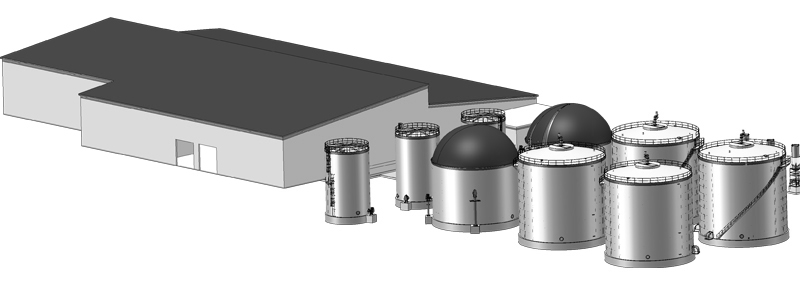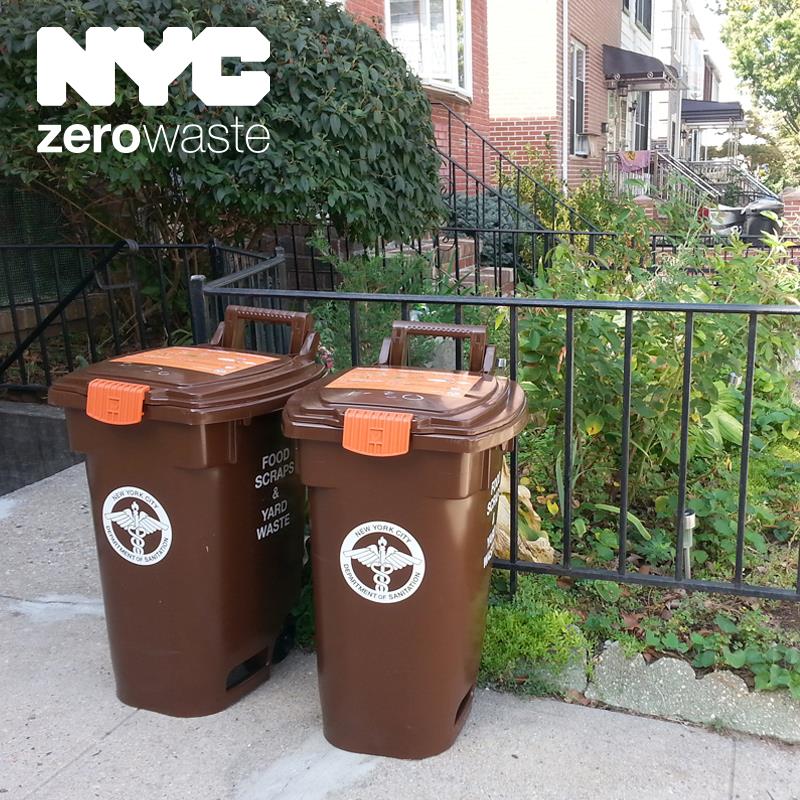BY JAIME FRANCHI, LONG ISLAND PRESS
A key component of Mayor Bill de Blasio’s ambitious plan to reduce organic waste in New York City involves an innovative new facility about to open miles away on Long Island. If it all works out as intended, the environmental and economic benefits could be huge for years to come.
The goal of his Zero Waste program is to put New York City on a path toward long-term waste reduction by the year 2030. In 2014, the city’s Department of Sanitation and the Mayor’s Office of Sustainability launched a pilot program in Brooklyn and Queens that collected organic waste, consisting of food scraps and other biodegradable material, from local residents. According to the city, disposing this garbage annually costs taxpayers about $1.7 billion.
“Operating an organics collection program can help New York City reduce millions of dollars in landfill disposal costs, achieve our recycling goals, and reduce pests by storing food waste in special rodent-resistant bins,” said Joan Byrnes, a spokesperson for the Zero Waste program.
Residents in Greenpoint, Williamsburg, Bay Ridge, Carroll Gardens, Cobble Hill, Columbia Street Waterfront District, Gowanus, Greenwood Heights, Park Slope, Red Hook, Sunset Park and Windsor Terrace who participated in the pilot program were each given a brown bin to handle their organic waste as well as a small kitchen container. According to their neighborhood’s pickup schedule, the Sanitation Department collected the organic waste at curbside and took it away. Curbside organics collection has since expanded to include more than 960,000 residents citywide.
Originally, the waste was intended to go to a facility in Pennsylvania, but that plan fell through. The City Council found a solution by signing a contract with American Organic Energy to dispose of Brooklyn’s organic material at its new anaerobic digestion facility in Yaphank, which is about 60 miles away on Long Island. Anaerobic digestion is a process that breaks down organic material naturally, converting it into compost and renewable energy.
The process to permit and authorize a facility with near zero waste capability has taken more than two years, with multiple high-profile partners providing specific engineering components. According to executives at American Organic Energy, the list of engineering and financial partners has grown since the inception of the project to include the following companies:
• GE Water and Process Technologies
• Caterpillar
• Eggersman
• Green Arrow Engineering
• Louis Perry (a division of CDM Smith)
• VHB
• Camco International Group
• Baker Tilly Capital, LLC
• Scotts Miracle-Gro
Before the engineering plans could even be drawn, the community had its say. Local environmentalists, residents and various municipalities and departments helped draft the plan to accommodate the project. Governor Cuomo marked this project as one of regional significance and many environmentalists are hopeful that this project will spark a revolution in the way the city handles its organic waste. The hope among government officials and environmentalists alike is to reduce overall waste and the costs associated with handling it, while carving out a replicable process to be adopted throughout the state, perhaps the nation.
“We’re setting out to build the most sophisticated food-waste processing facility in the world,” says Charles Vigliotti, founder of American Organic Energy. “Nothing less than that.”
Now that the site plan has been approved by the Town of Brookhaven, the Yaphank facility is expected to break ground early this year. Once the anaerobic digester is up and running, the boroughs’ organic waste will become fertilizer, biogas fuel, electricity and nutrient-rich water. And New York City will be closer to meeting its long-term goal of reducing its waste stream to zero.


































